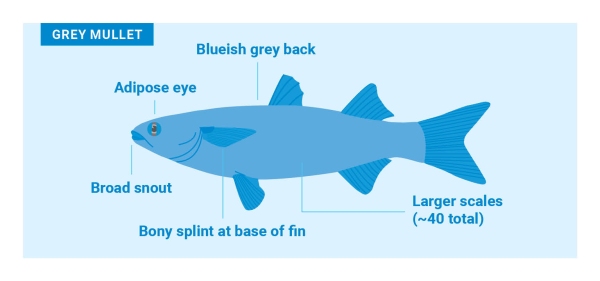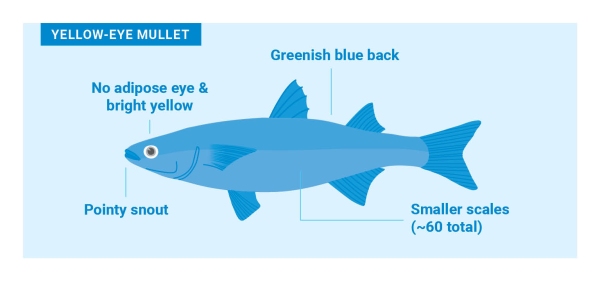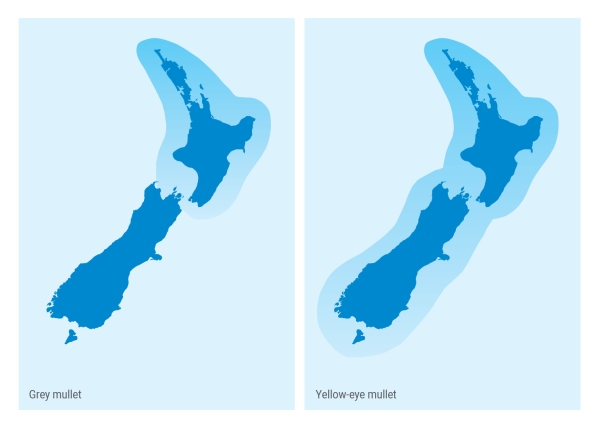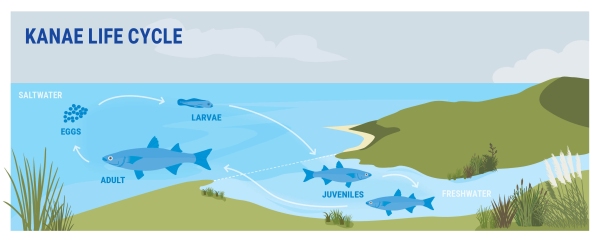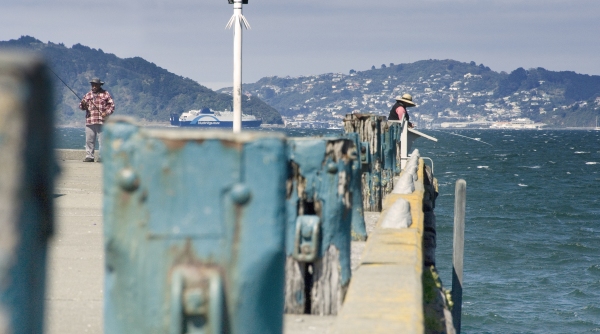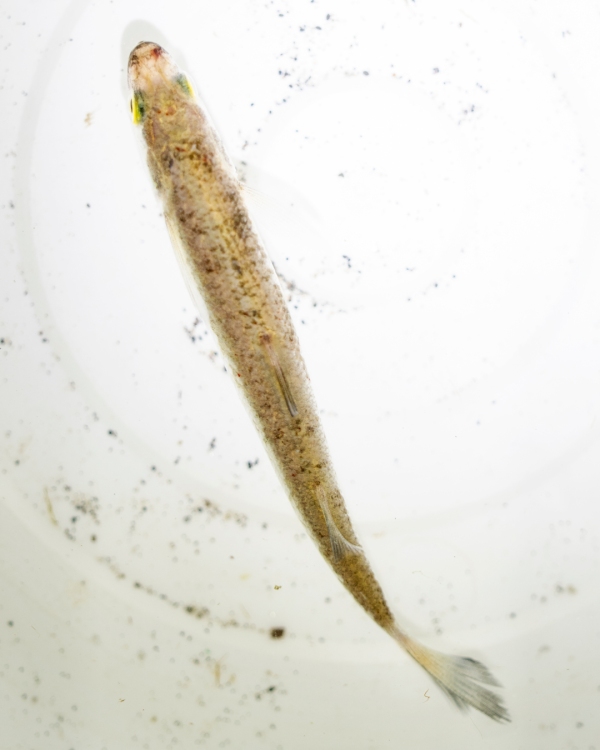Taonga species such as kanae (mullet), tuangi (cockles) and pātiki (flounder) are central to the identity and wellbeing of many Māori.
For generations these species have sustained communities and helped transfer customary practices and knowledge from one generation to the next.
However, many communities are reporting that both the abundance and size of these freshwater taonga are declining. Te Kūwaha, NIWA’s National Centre for Māori Environmental Research has been working with whānau, hapū and iwi for more than a decade to co-develop methods for the protection, restoration and economic development of these species.
Kanae species
There are two types of mullet in Aotearoa:
- Grey mullet
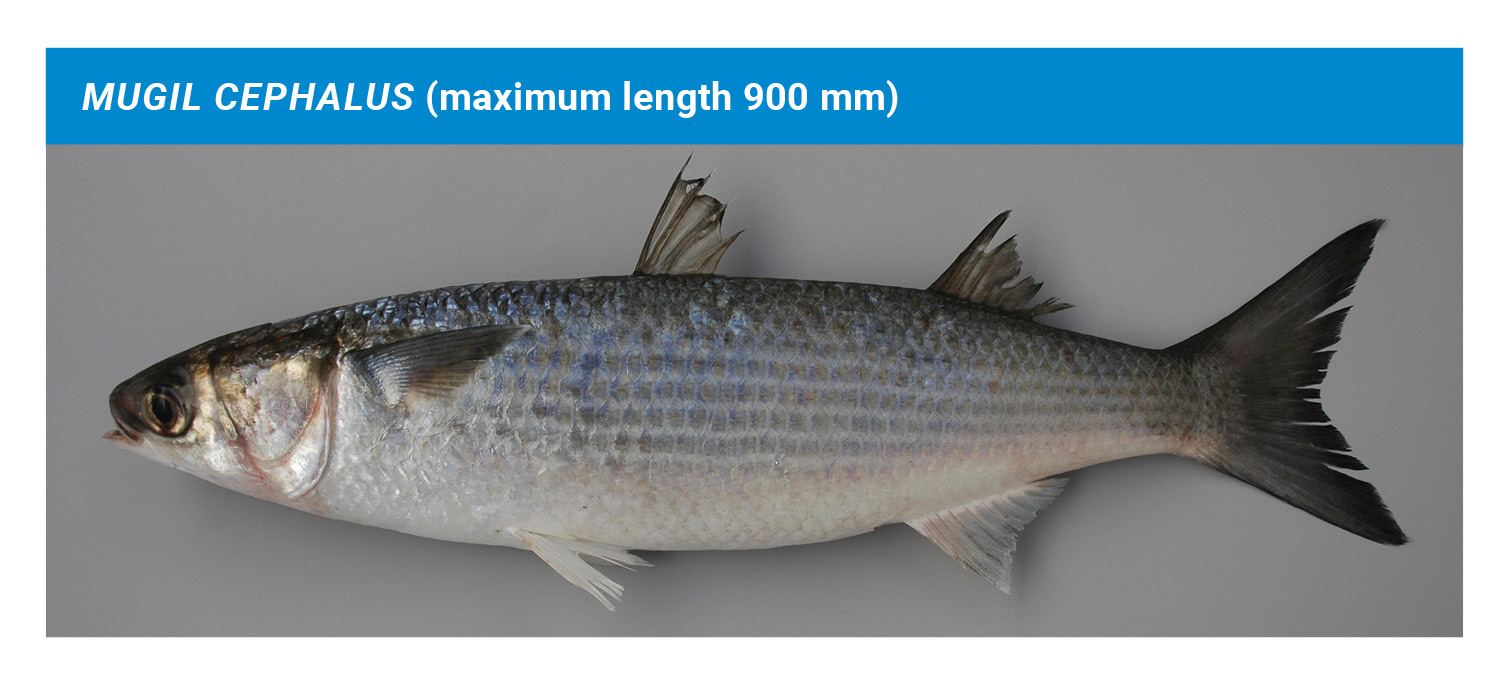 (Mugil cephalus) [Some Māori names: Kanae, Kanae raukura]
(Mugil cephalus) [Some Māori names: Kanae, Kanae raukura] - Yellow-eye mullet (Aldrichetta forsteri) [Some Māori names: Makawhiti, Aua, Kātaha, Kātaka, Mokohiti] (Photo: RM McDowell)
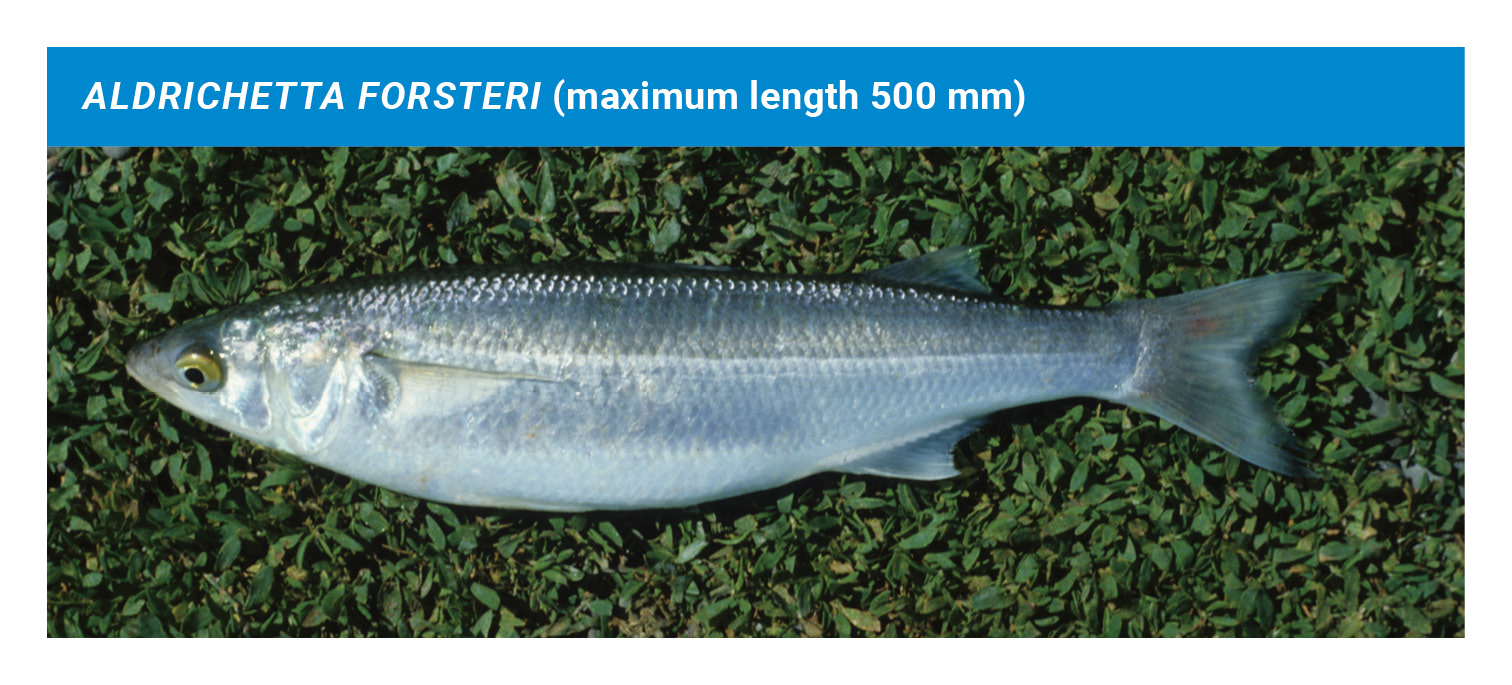
How do I tell the difference?
A key distinguishing feature between the two species are the eyes.
Grey mullet have a thick and fleshy vertical slit over the pupil called an adipose eye. Yellow-eye mullet have no adipose eye and have a bright yelloweye (where they get their name from).
Both species of mullet look very similar when they are small and can also be easily confused with other silvery fish such as smelt.
Kanae distribution
Grey mullet are found around the world, as well as in Aotearoa (which is their southern limit).
In Aotearoa, grey mullet are most abundant in the upper and central areas of the North Island (e.g. Northland, Auckland, Waikato, Bay of Plenty). In summer they commonly travel south, to the lower North Island (e.g. Wellington) and even the upper South Island (e.g. Nelson, Blenheim).
Yellow-eye mullet are found throughout Aotearoa but, similar to grey mullet, they are more abundant in the upper North Island. Yellow-eye mullet become less common going down the country and are relatively uncommon at Stewart Island.
Yellow-eye mullet can also be found in western and eastern Australia.
Where do kanae live?
Kanae are generally found near the shore, in harbours, estuaries, coastal embayments and exposed surf beaches.
However, both species of kanae sometimes move into freshwater such as lowland rivers and lakes.
Kanae lifecycle
Kanae are primarily a marine species but commonly move into rivers, streams and lakes and then back into the ocean.
Eggs
Kanae start their lifecycle as an egg in the ocean, living at the surface waters near the shore. The eggs are very small and are around 3 mm in diameter for yellow-eye mullet and 0.75 mm in diameter for grey mullet.
Larvae
The larvae hatch at sea and float in the currents, near the ocean surface. Grey mullet hatch after only two or three days (2-3 mm long). The hatching time of the yellow-eye mullet is unknown.
Juvenile
Juveniles live near the shore before drifting into estuaries and harbours with the current. Both species commonly move into freshwater but it is not an essential part of their life cycle.
Adult
Grey mullet can reach maturity in both marine or freshwater environments. Yellow-eye mullet can reach maturity in marine environments but it is unknown if they can reach maturity in freshwater environments.
Grey mullet reach maturity at three years old (male: 33 cm, female: 35 cm). Grey mullet spawn at sea and the eggs from one female can range from hundreds of thousands to millions. After spawning Grey mullet return to estuaries.
Grey mullet can also move into freshwater and then stay there permanently – based on otolith (ear bone) chemistry – we don’t know whether they briefly return to sea to spawn. In fished areas they can live up to 8 years and weigh around 1 kg. In unfished areas they can live up to 19 years and weigh more than 4 kgs.
Yellow-eye mullet reach maturity around two to three years (male and female: 22 – 23 cm). They spawn at sea in large shoals (groups) and the eggs from one female can range from tens of thousands to hundreds of thousands. Yellow-eye mullet canalso live for a long period of time (7+ years).
What do kanae eat?
Kanae mainly feed on plant material, algae and other organic matter.
While they prefer plant material, they can also eat smaller aquatic animals such as snails, shrimps, amphipods, crustaceans and, rarely, other smaller fish such as whitebait. Feeding on the surface using gulp feeding has also been observed in places such as below the Patea Dam. When feeding, they may take up other inorganic materials such as sand and silt.
Overall, their diet depends on the availability of food in their habitat.
How do kanae behave?
Kanae are a shoaling species, which means that they like to live and travel together.
They move in shoals as juveniles from the sea to estuaries and harbours. They are also known to move in shoals in rivers and streams. Grey mullet are known for moving up rivers and jumping frequently (also being referred to as jumping mullet). Yellow-eye mullet feed on algae attached to rocks, by moving onto riffles in shoals in the lower rivers (surface feeding).
Understanding the grey mullet
Research suggests that there may be different genetic groups of grey mullet around Aotearoa. This indicates that they may have different spawning times and behaviours.
Scientists are using the otolith (earbone) of the grey mullet to investigate their movement between marine and freshwater environments. Scientists can also use the otoliths to age grey mullet.
Kanae fishery
Kanae is a valuable food source and is harvested as a customary, commercial and recreational fishery.
Kai Grey mullet in particular has been a traditionally important kai for Māori, particularly in Northland and Waikato.
Recreation Grey mullet is a popular recreation species. Most of the catch is taken in Northland, Auckland and the Bay of Plenty. Yellow-eye mullet is commonly caught on wharves, especially by children. They are also most likely caught by net setting to be used as bait.
Commercial harvesting Grey mullet commercial harvesting started in the mid-1880s and supported one of the first commercial fisheries in Aotearoa. Improved technologies and the fact that grey mullet live in areas that are easily fished, has put pressure on grey mullet populations causing them to decline.
Yellow-eye mullet make up a small portion of the commercial fisheries in Aotearoa. Fish are mostly used to feed animals in zoos and parks.
The Ministry for Primary Industries (MPI) manages the fisheries of both species. The grey mullet fishery is managed under the code GMU, while the yellow-eye mullet fishery is managed under the code YEM. There are different rules in different regions across Aotearoa, stating how much you can take per day and how you can catch them.
What are the pressures on kanae?
More research needs to be done to understand the pressures on kanae but some known pressures are:
Habitat degradation Sedimentation in harbours and estuaries is a major pressure on mullet, as too much sediment degrades their habitat.
Disrupted fish passage Structures such as weirs and dams can restrict the ability of kanae to move between the sea, lakes and rivers. This movement is an important part of their life-cycle.
Overfishing If fishing effort is focused in a small area it could lead to the localised depletion of kanae.
How can we help kanae?
Some ways we can help kanae populations include:
- Protecting and restoring kanae habitat.
- Improving fish passage.
- Minimising soil erosion from land use activities (e.g.farming, earthworks) to reduce the sediment flowing into rivers/streams and eventually infilling estuaries and harbours.
- Improving the water quality in streams and rivers, to protect freshwater and estuarine habitats.
- Setting fisheries harvests at sustainable levels.

